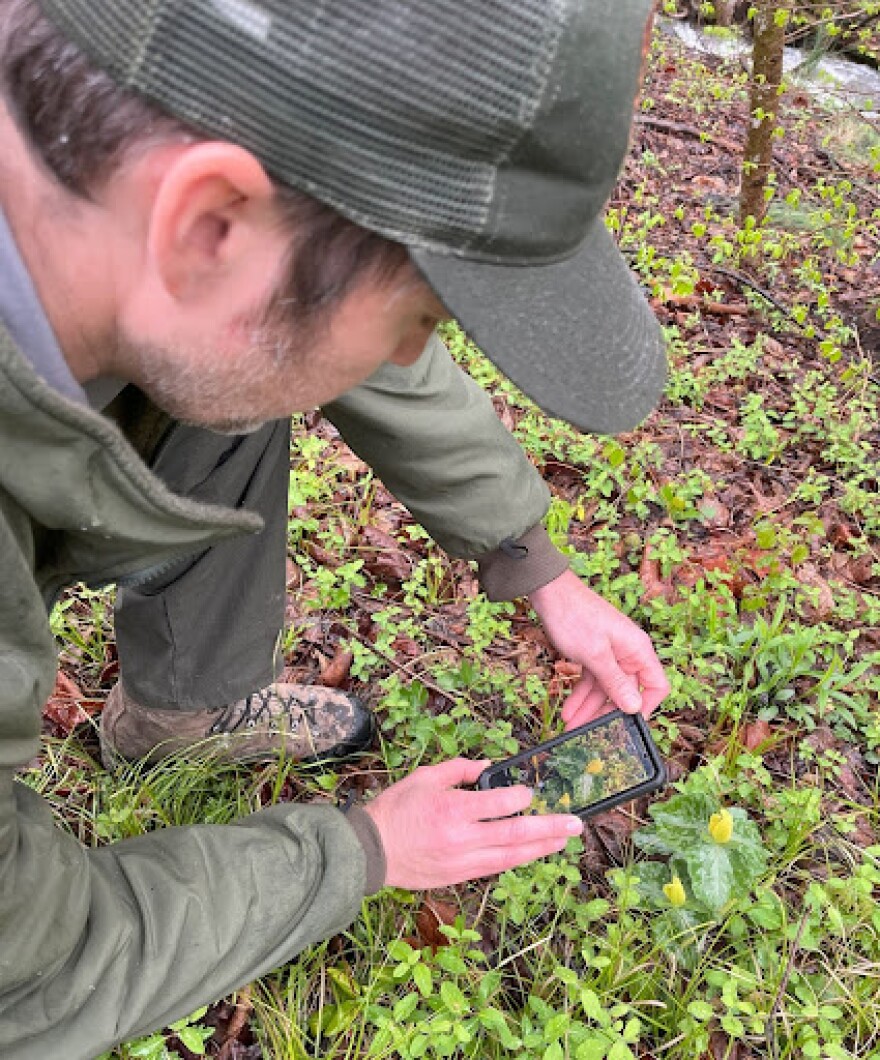Rows of colors festooned a hillside on a cold, misty spring day in Gatlinburg. Large, bare trees towered over blooming shrubs and flowers as Ian Sabo, a botanist at Great Smoky Mountains National Park, bent down to examine a white flower with a berry pink center.
By its smell and appearance, he determined it to be a sweet white trillium, also known as trillium simile.
“It’s got these really wide, broad overlapping petals,” he said. “I think that really gives that one away.”
This little trillium is one of over 1,500 flowering plants that are found here, making the Smokies home to the most diverse collection of wildflowers of any national park.
“We have plants here in the park that don't grow anywhere else in the world,” Sabo said. “So it's pretty neat.”
At the lower elevations of the park, spring wildflowers bloom in April and go dormant in the summer months. Most of these low-elevation flowers can be found in woodlands near streams, called riparian zones. They thrive in neutral soil that is rich with nutrients from dead leaves. The bare trees allow them to take in as much sun as possible when they bloom.
Sabo said these flowers have specific scents that are meant to attract certain pollinators — like the red trillium, also known as stinking Willie.
“Some folks say it's kind of reminiscent of a wet dog, but it's not a very appealing smell. … That trillium is actually more pollinated by carrion flies,” he said.
Other wildflowers like the yellow trillium, or trillium luteum, emit a lemon scent similar to Pledge furniture polish. It attracts pollinators like bees.

Visitors at the park can learn more about each wildflower species through iNaturalist, a free app used by millions of scientists and nature lovers worldwide. It allows users to upload pictures and recordings of wildlife, then type in the species or select one of the suggestions the app provides.
The app uses the location to generate the species list. It also publishes the date and time the photo or recording was taken. Once uploaded, other users can chime in to help identify it.
“Say somebody's just walking along a random trail in the park and find something that they've never seen before,” Sabo said. “[They can] take a picture of it, add it to iNaturalist. That easily could be a new species to the park that we've never observed here.”

Will Kuhn is the director of science and research at Discover Life in America, a nonprofit organization that works with Great Smoky Mountains National Park to update and maintain an inventory of its wildlife. He said the app has helped the nonprofit uncover new interactions between pollinating insects and flowers, including the grass of Parnassus, a flower that blooms in the summer at higher elevations of the park.
“We had volunteers that went out with us for a couple years in a row and documented a bunch of new pollinator records for [the grass of Parnassus],” he said.
Executive Director Todd Witcher said Discover Life in America uses iNaturalist to bolster their “Smokies Most Wanted” initiative. It’s a list published on the app that contains pictures and information on various plants and animals of special interest to the park. Some of the listed species have been identified, while others haven’t. That includes invasive species that are anticipated to arrive at the park.
“We try to encourage people to look for some very specific things we're wanting to know more about or where it is in the park,” he said. “We basically mine the data from iNaturalist to add to our inventory.”
Visitors can download the app to document wildflowers they come across at Great Smoky Mountains National Park. There are several trails throughout the park where visitors can see the plants. Officials are advising to limit group sizes to prevent flowers from being trampled.
This story was produced by the Appalachia + Mid-South Newsroom, a collaboration between West Virginia Public Broadcasting, WPLN and WUOT in Tennessee, LPM, WEKU, WKMS and WKU in Kentucky and NPR.




